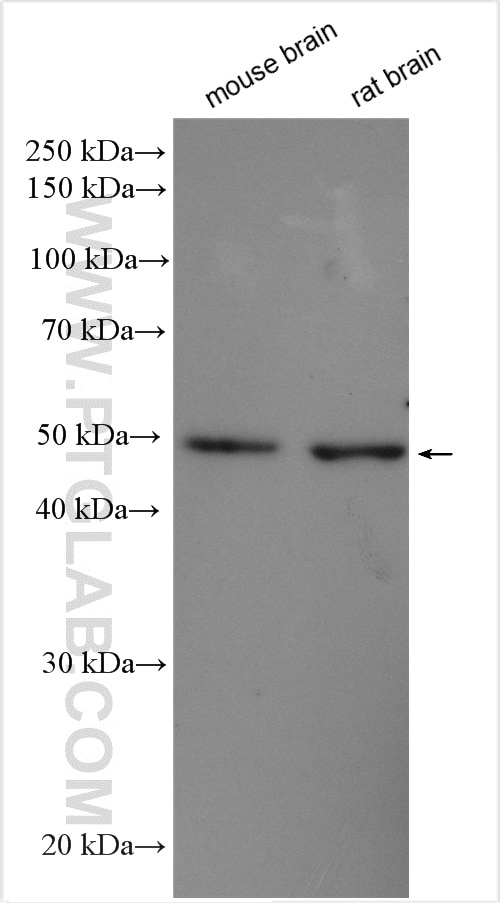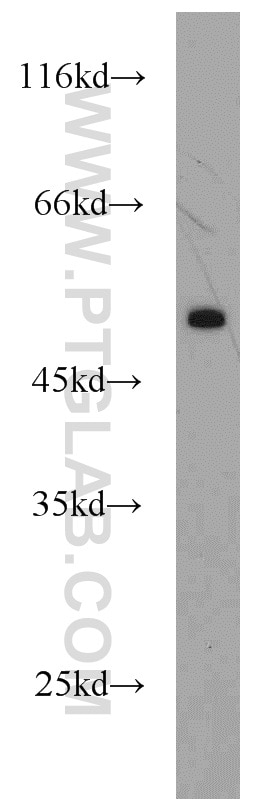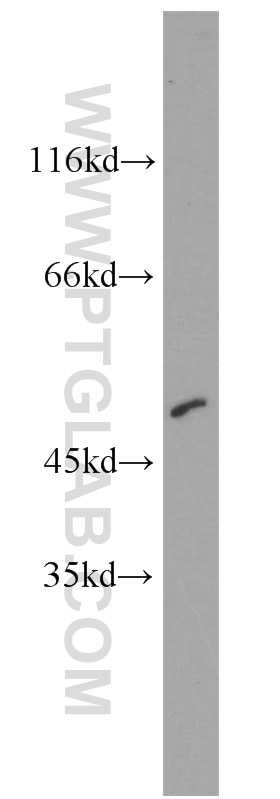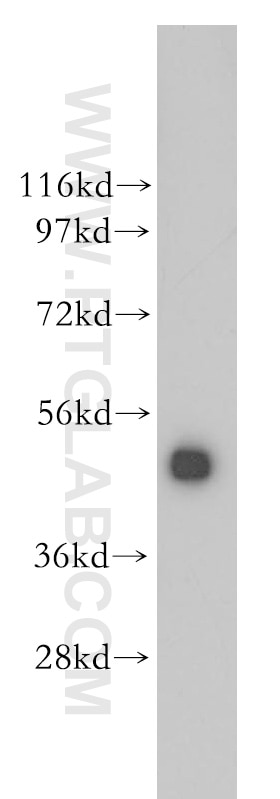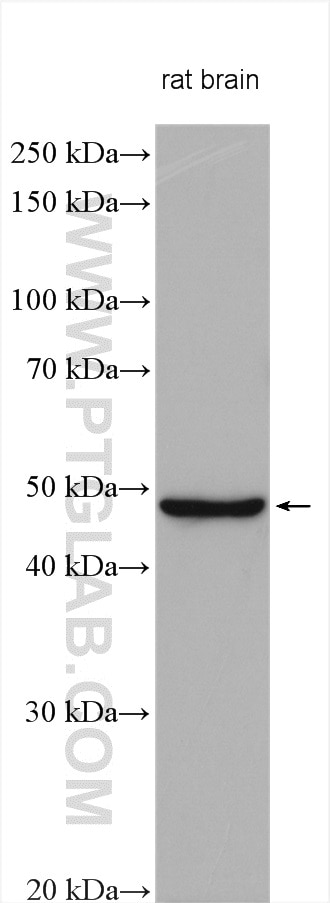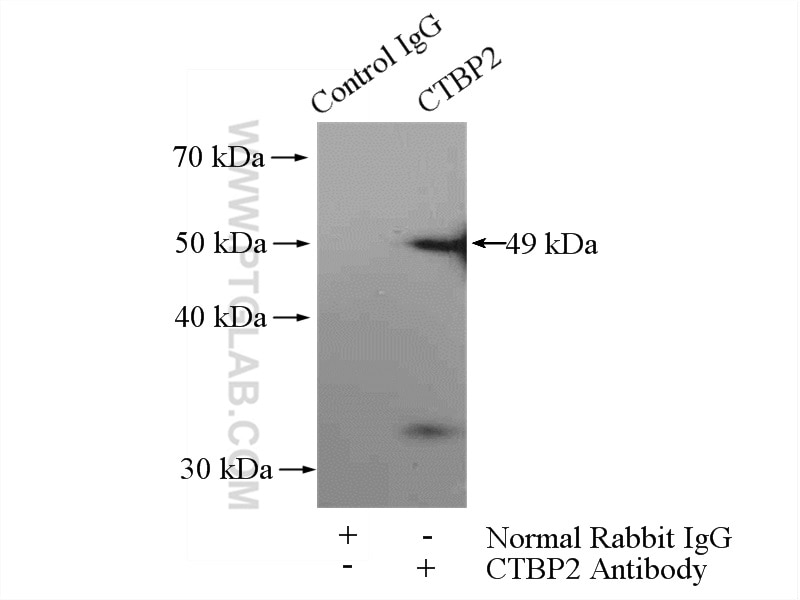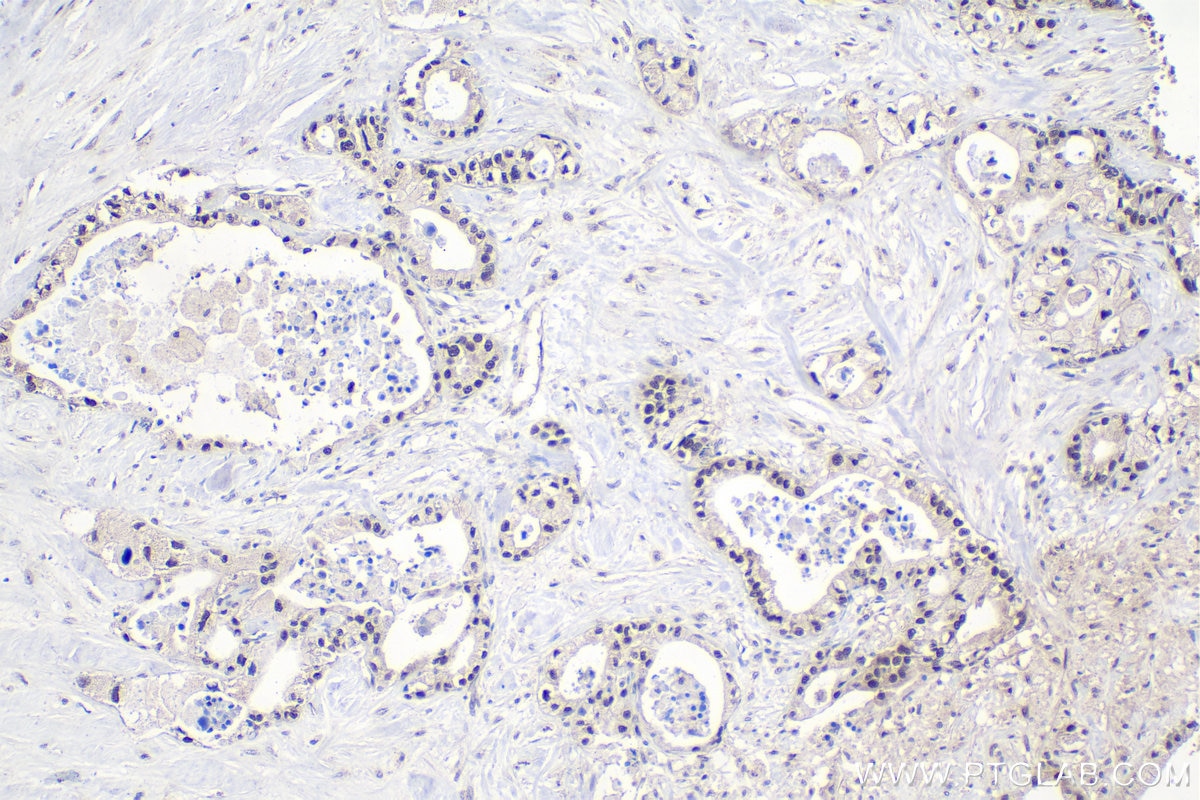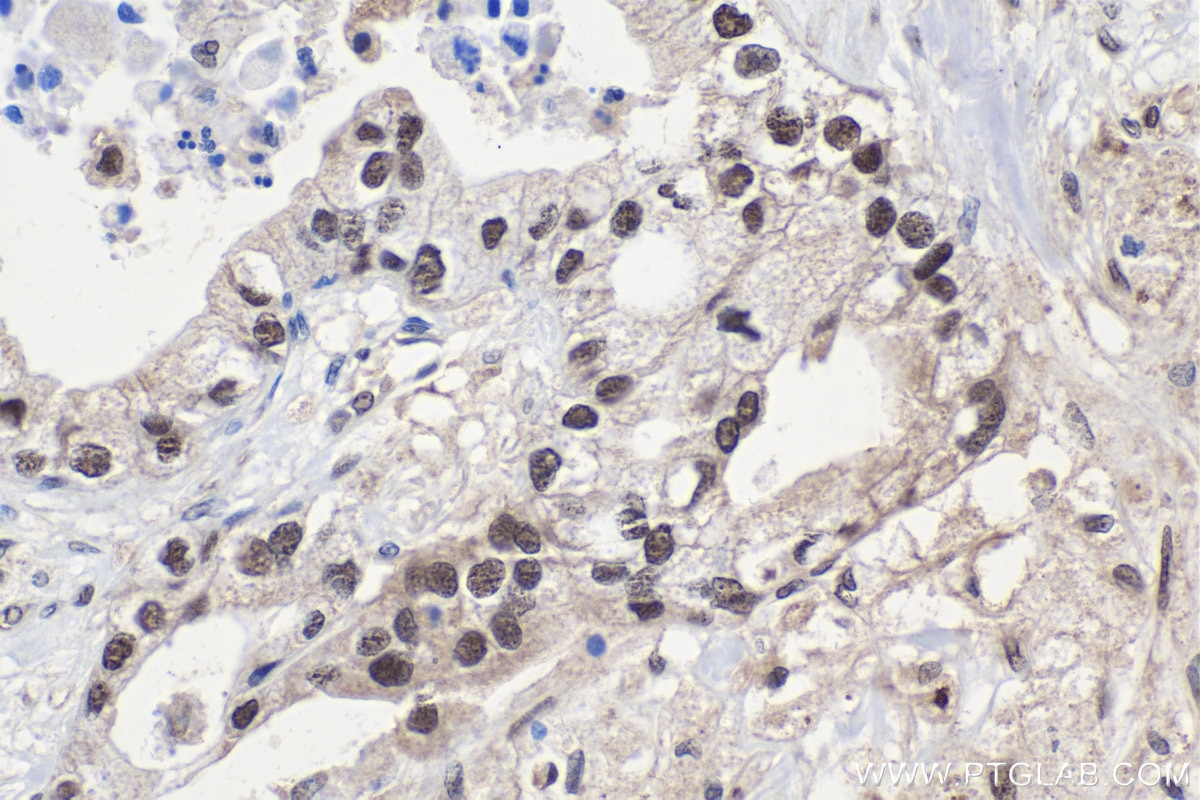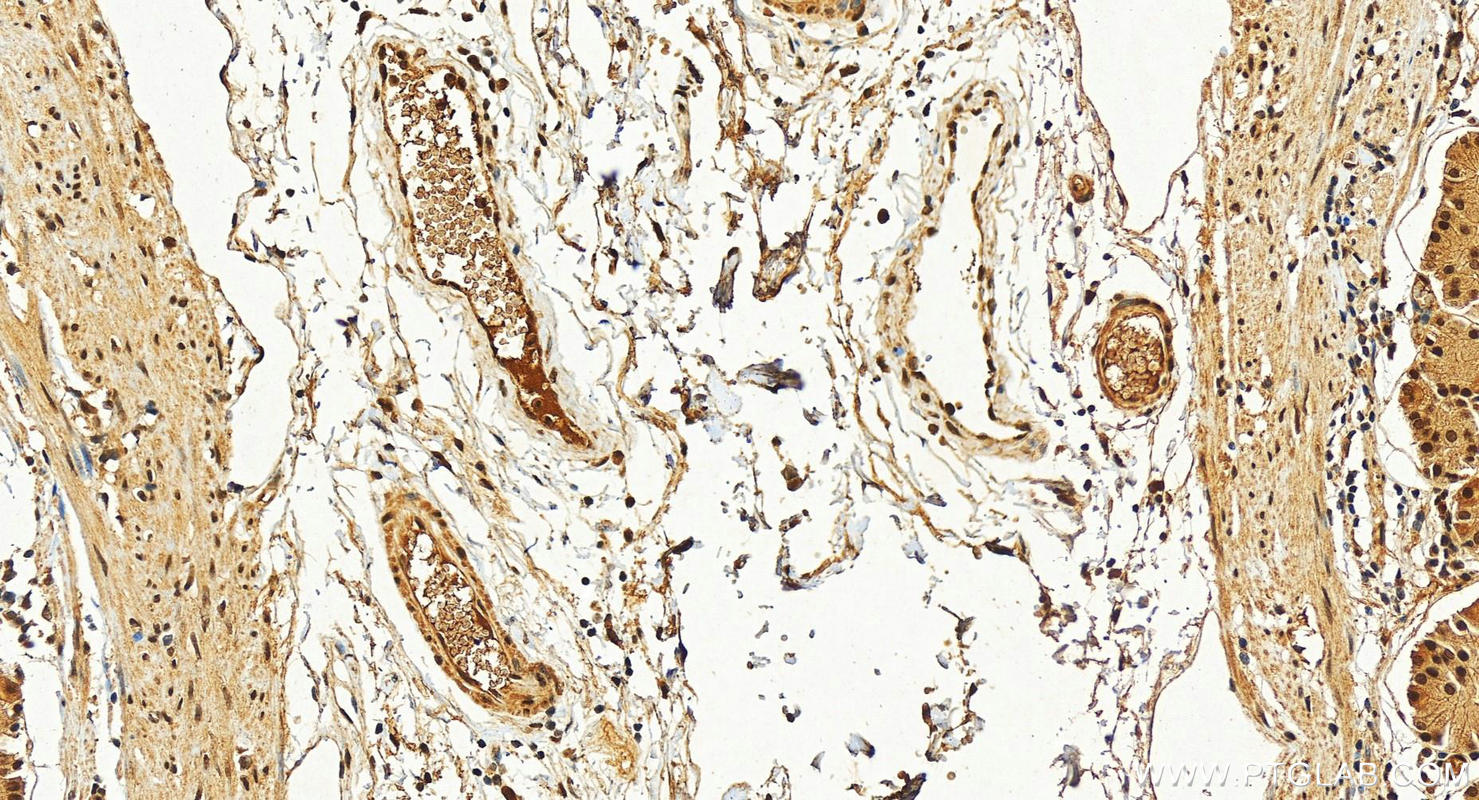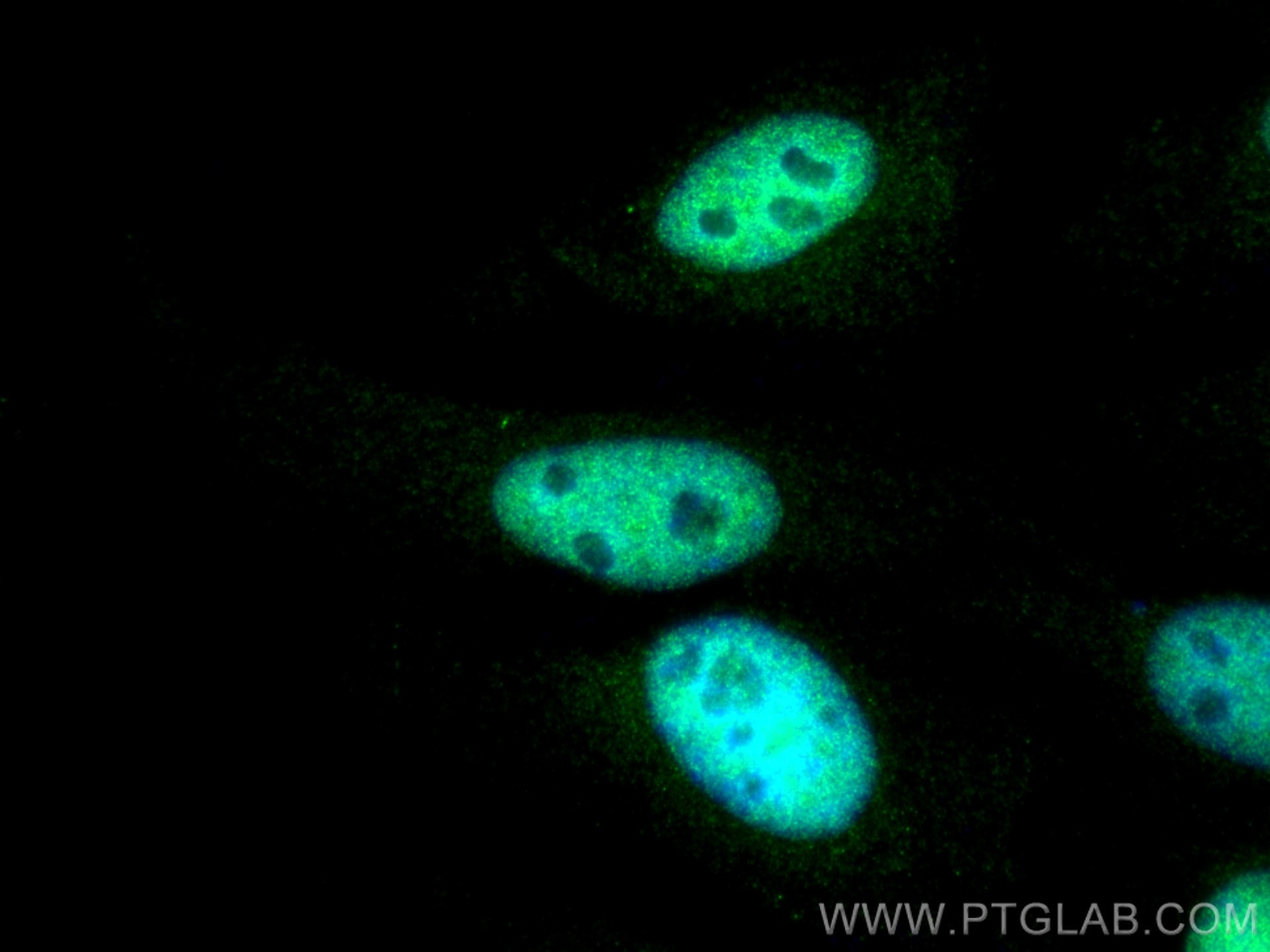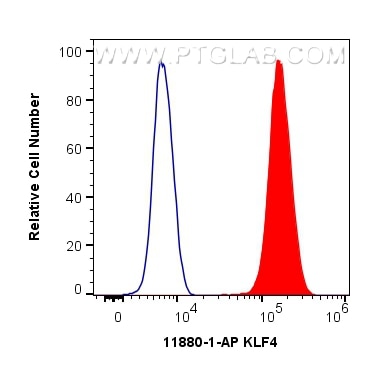Tested Applications
| Positive WB detected in | mouse brain tissue, mouse heart tissue, rat brain tissue |
| Positive IP detected in | mouse heart tissue |
| Positive IHC detected in | human pancreas cancer tissue, human stomach tissue Note: suggested antigen retrieval with TE buffer pH 9.0; (*) Alternatively, antigen retrieval may be performed with citrate buffer pH 6.0 |
| Positive IF/ICC detected in | HeLa cells |
| Positive FC (Intra) detected in | HeLa cells |
Recommended dilution
| Application | Dilution |
|---|---|
| Western Blot (WB) | WB : 1:1000-1:4000 |
| Immunoprecipitation (IP) | IP : 0.5-4.0 ug for 1.0-3.0 mg of total protein lysate |
| Immunohistochemistry (IHC) | IHC : 1:500-1:2000 |
| Immunofluorescence (IF)/ICC | IF/ICC : 1:1000-1:4000 |
| Flow Cytometry (FC) (INTRA) | FC (INTRA) : 0.40 ug per 10^6 cells in a 100 µl suspension |
| It is recommended that this reagent should be titrated in each testing system to obtain optimal results. | |
| Sample-dependent, Check data in validation data gallery. | |
Published Applications
| KD/KO | See 3 publications below |
| WB | See 7 publications below |
| IHC | See 1 publications below |
| IF | See 6 publications below |
| CoIP | See 1 publications below |
Product Information
10346-1-AP targets CTBP2 in WB, IHC, IF/ICC, FC (Intra), IP, CoIP, ELISA applications and shows reactivity with human, mouse, rat samples.
| Tested Reactivity | human, mouse, rat |
| Cited Reactivity | human, mouse, zebrafish, gerbil |
| Host / Isotype | Rabbit / IgG |
| Class | Polyclonal |
| Type | Antibody |
| Immunogen | CTBP2 fusion protein Ag0352 Predict reactive species |
| Full Name | C-terminal binding protein 2 |
| Calculated Molecular Weight | 49 kDa |
| Observed Molecular Weight | 49 kDa |
| GenBank Accession Number | BC002486 |
| Gene Symbol | CTBP2 |
| Gene ID (NCBI) | 1488 |
| RRID | AB_2261202 |
| Conjugate | Unconjugated |
| Form | Liquid |
| Purification Method | Antigen affinity purification |
| UNIPROT ID | P56545 |
| Storage Buffer | PBS with 0.02% sodium azide and 50% glycerol, pH 7.3. |
| Storage Conditions | Store at -20°C. Stable for one year after shipment. Aliquoting is unnecessary for -20oC storage. 20ul sizes contain 0.1% BSA. |
Background Information
C-Terminal binding protein 2 (CTBP2) is a transcriptional repressor. It contains a NAD+ binding domain similar to NAD+-dependent 2-hydroxyacid dehydrogenases. This protein is thought to bind to the C-terminus of the adenovirus E1A proteins. Studies in mice suggested that this protein is involved in transcriptional repression. CTBP2 is expressed in all tissues tested, with a higher level of expression in the heart, skeletal muscle, and pancreas. The gene of CTBP2 is mapped to human chromosome 21q21.3.
Protocols
| Product Specific Protocols | |
|---|---|
| WB protocol for CTBP2 antibody 10346-1-AP | Download protocol |
| IHC protocol for CTBP2 antibody 10346-1-AP | Download protocol |
| IF protocol for CTBP2 antibody 10346-1-AP | Download protocol |
| IP protocol for CTBP2 antibody 10346-1-AP | Download protocol |
| FC protocol for CTBP2 antibody 10346-1-AP | Download protocol |
| Standard Protocols | |
|---|---|
| Click here to view our Standard Protocols |
Publications
| Species | Application | Title |
|---|---|---|
J Neurosci Tonotopic variation in the calcium dependence of neurotransmitter release and vesicle pool replenishment at mammalian auditory ribbon synapses. | ||
Neural Plast Specific Influences of Early Acoustic Environments on Cochlear Hair Cells in Postnatal Mice. | ||
Proteome Sci Proteomic analysis of neonatal mouse hearts shows PKA functions as a cardiomyocyte replication regulator | ||
Genet Mol Res MicroRNA-200 family members are weakly expressed in the neurosensory epithelia of the developing zebrafish (Danio rerio) inner ear. | ||
Front Physiol Ling-gui-zhu-gan granules reduces obesity and ameliorates metabolic disorders by inducing white adipose tissue browning in obese mice |
Reviews
The reviews below have been submitted by verified Proteintech customers who received an incentive for providing their feedback.
FH Alessandro (Verified Customer) (02-04-2025) | high specificity and sensitivity, providing reliable and reproducible results
|
